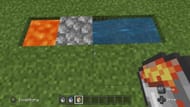In Minecraft, farming is an incredibly helpful means of obtaining food and various other resources. Using an automated farm is a great way to ensure that players always have the resources they need.
While veteran Minecraft players have created many elaborate and productive automatic farm designs, newcomers may not have the extensive knowledge to do the same. This is why newer players may want to start with smaller and simpler farms before learning how to create more complex automation.
Below, players who are relatively new to Minecraft can find some excellent starter-friendly automatic farms to get them started.
Chart New Territories with the ultimate Minecraft Seed Generator!
Note: This article is subjective and reflects the opinions of the writer
Cobblestone Generator and 4 other automated farms that work great for beginners in Minecraft
1) Egg Farm

Automated egg farms are one of the easiest farms that players can create in all of Minecraft. The basic premise involves putting a chicken within a chamber where it's incapable of moving and placing a hopper connected to a chest beneath it. Over time, the chicken will lay eggs, which will be deposited into the chest via the hopper.
If players would like, they can expand on the design to accommodate more chickens. As long as the floor is made of hoppers connected to chests, the chamber containing the chickens can be as large as desired.
2) Pumpkin/Melon Farm

Compared to standard crops, pumpkins and melons grow in a more complex fashion in Minecraft. However, it's still possible to farm them automatically. This can make for a particularly solid early-game food source in the game.
Players can build this farm by first placing a trench filled with water in the center. The water runs to each end of the trench, with hoppers leading to chests at the bottom.
Using a combination of observers and pistons, players can detect when a melon/pumpkin vine is fully grown. This will cause the piston to push and break the melon or pumpkin and push its contents into the water.
All that's left is for the items to make their way into the hoppers at either end of the trench. Players can then collect them from the connected chests.
3) Cobblestone Generator

A cobblestone generator is one of the most basic farms in Minecraft (and a favorite of Skyblock players). To create one, players require little more than a bucket of lava and a bucket of water.
Players simply need to place a trench on the ground with lava on one side and water on the other. The trench can be as small as a few blocks long. When the opposing lava and water flows collide, they'll create a block of cobblestone in their wake, which players can then mine easily.
Cobblestone generators can also be expanded into larger and more complex designs, but the initial design is perfectly fine for newcomers. It can be tedious to mine cobblestone one block at a time. However, it's a great way to obtain extra cobblestone without diving into a mine to do so.
4) Sugar Cane Farm

Though this Minecraft farm technically runs on redstone, it doesn't require knowledge of circuits, repeaters, or comparators.
This automatic farm combines observers and pistons to automatically break tall stalks of sugar cane. The sugar cane is placed in a housing, planted on an appropriate block near a contained water flow for growth. Once the sugar cane grows to its maximum height of three blocks, the observers detect the sugar cane and initiate the pistons.
The pistons extend, breaking the stalks and allowing the sugar cane to be pushed into a trench of hoppers. These hoppers are connected to a chest or multiple chests, where players can then collect their harvest.
5) Automatic Crop Farm

While this automatic farm is somewhat more complex because it requires villagers, it's still straightforward and productive.
If new Minecraft players can collect two villagers and relocate them with a boat, this farm will ensure they never run out of crops to eat. The design entails a chamber where one villager can access a compost block. This is where it will become a farmer.
Players can then till the soil within the chamber and light the area to ensure that the crops grow even at night. The farmer villager will tend to the crops as needed.
Connected to the main enclosure is a one-block wide room containing another villager with a hopper at its feet (leading to a chest). When the farmer has filled its inventory with crops, it will head to its fellow villager and toss the crops to it. The crops will then land in the hopper and descend into the chest, where they can be collected.
Uncover new worlds with our Minecraft Seed Generator!

